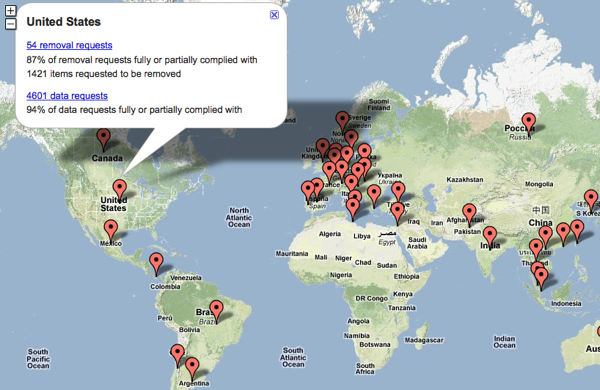
In swift juxtaposition to the official opening of the U.S. FTC antitrust investigation, Google released a new version of their transparency report. The report gives additional levels of insight into government influence on censorship.
The Improved Report
Google released its first transparency report in September 2010 and since that time have implemented several new features, including real-time reporting and a new lineup of extras that focus on information regarding censorship. While some data on Google page properties being taken down was available previously, the new data shows the government influence in the removal of those properties.
Removed properties can be anything from a YouTube video to a Blogger blog to a Google Groups discussion to a single search page result, and many of the requests call for the removal of a large batch (as many as several thousand) of items. The new version of the report tells users how many items were removed, how many requests there were for removal, where those requests originated, and what percent of those requests were complied with.
Additionally, data on the requests is displayed in a plain English format. For example, users can see that 1,110 items were removed out of the 1,421 items requested for removal due to “Six court orders […] relating to a case of defamation against a man and his family.”
Certain removal data, such as that related to child pornography or copyright violations, are not displayed on the site.
Broader Insights on Government Actions
The report has allowed analysts to see which countries have requested the removal of information, their reasons, and their rate of success in working with Google. Some countries have a phenomenally high success rate. Germany, according to paidContent, is at the top with a 97 percent compliance.
But some countries seem to be striking out when it comes to requests, and Google is using the report to explain why. India has the lowest compliance rate, 22 percent, because the majority of requests involve an attempt to complete actions such as “remove a blog and YouTube videos that were critical of Chief Ministers and senior officials of different states.”
Users can find the report and explore the data here.
